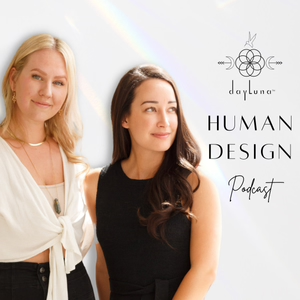
2-90. The Truth of the Sorcerer’s Apprentice
12/17/15 • -1 min
No. Not the forgotten Nicholas Cage movie. I’m talking about Der Zauberlehrling, a poem by Goethe written in 1797. You may know it better as the bit from the original Fantasia (both, actually) that featured Mickey Mouse. That version was based on Paul Dukas’ symphonic poem, and featured the wizard Yen Sid (think about it) who, after performing alchemical miracles, retires for the evening, leaving his lab in the hands of his young apprentice. This apprentice apparently suffers from the Dunning-Kruger effect. In no time, he conjures up way too many demonic assistants, who wreak havoc until the wizard returns and sets things straight. You should watch it if you haven’t seen it; it’s a triumph of mid-century animation.
What’s interesting is that there’s a lot of accuracy depicted in the piece. Ok, we’ll forgive the anthropomorphic rodent and broomsticks, but overall, what’s depicted there has roots in the history of alchemy.
Most of our “Al” words stem from Arabic, with “Al” simply meaning “The.” “Chemy” comes from the Arabic word for the “art of transmuting metals.” While we think of alchemy as the forerunner of chemistry, it’s perhaps better to think of it as the forerunner of metallurgy. Chemistry branched off some time later.
In the ancient world, blending metals was hugely important. There’s a very good reason we had a “bronze” age. Learning to combine copper and arsenic into a new metal changed the world by allowing societies with that technology to make better tools, weapons and art. Alchemists were the people who learned how to make these metals, and through experimentation, improve them. Arsenic gave way to tin, bronze gave way to iron, which gave way to steel and so on.
It was difficult to learn the specifics and intricacies of proper metal production. It was also extremely valuable, and only the chosen few were allowed into the guilds and given access to the formulas and techniques. These few were apprentices, just like Mickey.
Mickey would have been given the drudge work, such as grinding materials or stoking the fire and keeping it hot with bellows. His pay would be learning valuable skills, which he would protect from outsiders just as his master did. This gave the entire practice an air of “secrecy,” which in some societies was seen as unholy.
To the outsider, alchemy seemed like pure magic. Not only were common metals “changed” or “transmuted” into something more valuable, it was done while the practitioners combined precise and sometimes odd ingredients into crucibles, followed by specific chanting in strange clothing. Things glowed (molten metals) while producing strange smells and colorful smoke. Jars, vials and manuscripts marked with odd symbols filled the lab, and the whole scene may have seemed similar to religious rituals, which are often followed without explanation. This all contributes to the idea that somehow, alchemy and religion are related. Just think of turning water into wine and you can see the connection.The
In the animation, you see a man in a protective robe and cap standing over a cauldron. In reality, it probably would have been a crucible, and wearing protective clothing around molten metals is wise. As for the chanting, the mixing of metals requires precise timing. Reliable alarm clocks hadn’t been invented yet, so timing was done with hourglasses or, by the reciting of poems and songs. Each spoken bit of prose took a certain amount of time, so if you needed to wait one minute, you’d recite the poem that took one minute. It may have been in a classic language unfamiliar to the commoners of the time, so it sounded strange and mystical. The words weren’t doing anything other than tellin...
No. Not the forgotten Nicholas Cage movie. I’m talking about Der Zauberlehrling, a poem by Goethe written in 1797. You may know it better as the bit from the original Fantasia (both, actually) that featured Mickey Mouse. That version was based on Paul Dukas’ symphonic poem, and featured the wizard Yen Sid (think about it) who, after performing alchemical miracles, retires for the evening, leaving his lab in the hands of his young apprentice. This apprentice apparently suffers from the Dunning-Kruger effect. In no time, he conjures up way too many demonic assistants, who wreak havoc until the wizard returns and sets things straight. You should watch it if you haven’t seen it; it’s a triumph of mid-century animation.
What’s interesting is that there’s a lot of accuracy depicted in the piece. Ok, we’ll forgive the anthropomorphic rodent and broomsticks, but overall, what’s depicted there has roots in the history of alchemy.
Most of our “Al” words stem from Arabic, with “Al” simply meaning “The.” “Chemy” comes from the Arabic word for the “art of transmuting metals.” While we think of alchemy as the forerunner of chemistry, it’s perhaps better to think of it as the forerunner of metallurgy. Chemistry branched off some time later.
In the ancient world, blending metals was hugely important. There’s a very good reason we had a “bronze” age. Learning to combine copper and arsenic into a new metal changed the world by allowing societies with that technology to make better tools, weapons and art. Alchemists were the people who learned how to make these metals, and through experimentation, improve them. Arsenic gave way to tin, bronze gave way to iron, which gave way to steel and so on.
It was difficult to learn the specifics and intricacies of proper metal production. It was also extremely valuable, and only the chosen few were allowed into the guilds and given access to the formulas and techniques. These few were apprentices, just like Mickey.
Mickey would have been given the drudge work, such as grinding materials or stoking the fire and keeping it hot with bellows. His pay would be learning valuable skills, which he would protect from outsiders just as his master did. This gave the entire practice an air of “secrecy,” which in some societies was seen as unholy.
To the outsider, alchemy seemed like pure magic. Not only were common metals “changed” or “transmuted” into something more valuable, it was done while the practitioners combined precise and sometimes odd ingredients into crucibles, followed by specific chanting in strange clothing. Things glowed (molten metals) while producing strange smells and colorful smoke. Jars, vials and manuscripts marked with odd symbols filled the lab, and the whole scene may have seemed similar to religious rituals, which are often followed without explanation. This all contributes to the idea that somehow, alchemy and religion are related. Just think of turning water into wine and you can see the connection.The
In the animation, you see a man in a protective robe and cap standing over a cauldron. In reality, it probably would have been a crucible, and wearing protective clothing around molten metals is wise. As for the chanting, the mixing of metals requires precise timing. Reliable alarm clocks hadn’t been invented yet, so timing was done with hourglasses or, by the reciting of poems and songs. Each spoken bit of prose took a certain amount of time, so if you needed to wait one minute, you’d recite the poem that took one minute. It may have been in a classic language unfamiliar to the commoners of the time, so it sounded strange and mystical. The words weren’t doing anything other than tellin...
Previous Episode

2-89. Stop the Presses!
Over the last couple of days, my social media feeds have been filling up with short articles and witty headlines pointing at the people of Woodland, North Carolina, who are reportedly afraid that solar panels will drain the sun.
A pause.
One oft-cited source is the Independent UK, a fairly respectable paper who ran the story in their “Americas” section with the headline “US town rejects solar panels amid fears they ‘suck up all the energy from the sun’. As of this writing, the article has been shared more than 148,000 times. (In the time it took to create this article, that number jumped to 167,000.)
Most people who are aware of this story know one more fact from the article “A retired science teacher said she was concerned the panels would prevent plants in the area from growing.”
And with that, people are having a Ha Ha! at Woodland, North Carolina. Folks in the North point to the South and say “Look how dumb they are.” People in the world, point at the US and say “What a ridiculous country.”
Here’s a representative comment from the Independent UK article:
“This is wonderful! Another laugh out loud too crazy to make it up goofy story from Amurica . It’s like the light hearted story segment at the end of the news – problem is, these are the majority of the news stories coming out of this literally joke nation.” (sic)
And when you look at the facts with curiosity, you find that those blanket assessments were based on the statements of two people, who may be married.
Sharon Hill of Doubtful News looked into this story, using the same articles that people were sharing around, except that she actually read them. The short version is this: there was a town planning meeting where public comments were accepted. Two people made unscientific complaints against the project, and one of them is a retired science teacher. Other people complained that there were already solar plants in town, and that these new plants weren’t a good enough reason to change zoning on this one parcel of farm land.
When I shared the Doubtful News article this morning, I’m not sure everyone read it, as some of the replies continued to make fun of people who are afraid of solar power. Again, those “people” were two individuals who were possibly married and had a political agenda against solar panels. Their comments are silly, but silly comments from two unknown citizens aren’t newsworthy.
Sharon’s article gives a MUCH better picture of the story. And it’s actually not much of a story: people at a town meeting voted down a zoning change for a variety of reasons, and two people said some laughable things during the comments portion.
So was the Independent UK just lazy? No, they wanted to write an article making fun of Americans. And while there’s plenty to make fun of, this doesn’t really qualify. Thankfully, some local papers reported the story factually. Keith Hoggard in the Roanoke-Chownan News-Herald reported a very matter-of-fact account of the meeting. His headline: Woodland rejects solar farm.
That’s the truth, but that doesn’t sell papers or online ads.
If you’re a curious person, and you see something and wonder “How could that be?” It’s ALWAYS worth it to take a deeper look. We live in a world where content creators are clamoring for your attention, and they know that if they skew a story in certain ways, you’re more likely to click. But that skewing does curiosity a disservice when it tells a story that isn’t there. And it ignores some truly interesting parts of the story, like the fact that fire departments need special training to deal with solar panel fires. That’s a fact I didn’t know today, and it’s not a fact I would have learned from the Independent UK.
Kudos to Sharon Hill for trying to bring the truth to light. She’s performing a service for curious people, everywhere.

Next Episode

2-91. Hog Calling in 8,113 CE
Take one old swimming pool, add common objects from 1940s, and fill it with an inert gas. Then cover it with a seven foot stone slab, and you’ve created “The Crypt of Civilization.”
With the discovery of King Tut’s tomb still fresh in the public’s mind and the rumblings of another world war beginning in Europe, Thornwell Jacobs thought up the idea of deliberately creating another Tut’s Tomb for future archaeologists, but instead of filling it with funerary articles, this one would be a representation of civilization at the time.
At Oglethorpe University in Brookhaven, Georgia, an abandoned swimming pool was donated to the project. Its walls were reinforced with enamel plates, covered in tar, and objects were carefully placed inside. Some of the items include: the contents of a woman’s purse, voice recordings of major figures in the impending World War II, a Lone Ranger toy, a bottle of Budweiser and even a film copy of Gone with the Wind.
Books were important, but instead of taking up a lot of space with fragile paper, 800 works of historic value were recorded on microfilm. And of course there are film readers and projectors in there as well, so future archaeologists can actually read the Illiad or watch Gone with the Wind… providing the film survives. And yes, there’s an audio recording of the champion hog caller, which is a skill that may not be needed in the future.
How long are these things expected to survive? Jacobs calculated that the Egyptian calendar began 6,177 years before the idea of his crypt, so he figured it should be another 6,177 years before it should be opened. That date is in the year, 8,113 CE.
Concerned that treasure hunters might seek to enter the crypt before its time, Jacobs left a message at the door, which included the following lines:
This Crypt contains memorials of the civilization which existed in the United States and the world at large during the first half of the twentieth century. …No jewels or precious metals are included. …we beg of all persons that this door and the contents of the crypt within may remain inviolate.
Jacobs, it seems, didn’t know about the value of collectibles.
It’s a safe bet that 6,000 years from now, the English language will not exist. Because we found the Rosetta Stone, we can read Egyptian Hieroglyphics. But without that find, we’d likely still be baffled by that elaborate pictographic language . What will future archaeologists use to decipher what we’ve written? And how can they appreciate that this preserved moment in time, was but a moment? Even 80 years later, we might struggle to recognize many of the objects inside. Technology is moving so quickly that any time capsule can’t possibly speak for a period of more than a few years. With the Egyptians, we had a written language to decipher. In the future, archaeologists will be looking at iPhones, where nothing is apparent unless it’s powered on. Will they be able to plug it in and read its contents? A Kindle can hold thousands of books, but will anyone in the future know that?
And more important, will they even care to? Or will curiosity about the past go the way of flivvers and buggy whips?

Some of the objects sealed inside the Crypt of Civilization.
If you like this episode you’ll love
Episode Comments
Generate a badge
Get a badge for your website that links back to this episode
<a href="https://goodpods.com/podcasts/daily-curio-college-of-curiosity-107428/2-90-the-truth-of-the-sorcerers-apprentice-5571596"> <img src="https://storage.googleapis.com/goodpods-images-bucket/badges/generic-badge-1.svg" alt="listen to 2-90. the truth of the sorcerer’s apprentice on goodpods" style="width: 225px" /> </a>
Copy





